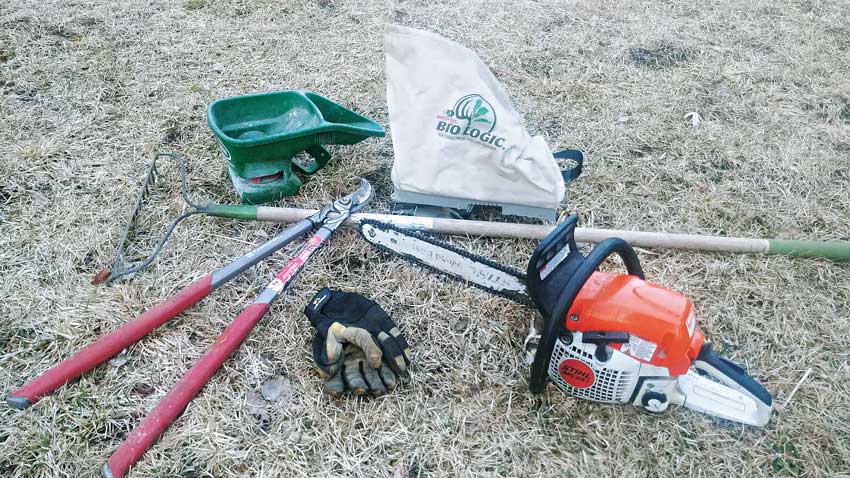It’s early February, the power is out and it’s cold outside, but as I sit next to the warm fire with my coffee, I cannot help to think about the beautiful season that will be upon us within a couple months. Along with the beauty of springtime comes work. Whether you are planting gardens, trimming hedges, or raking the leaves that you may have avoided all fall, there is work to be done come spring. Like me, if you own or manage property for hunting or recreational purposes, it’s likely that this is the busiest time of the year for you as well. Whether you have 5 acres, or 500 acres, this writeup will hopefully provide some helpful tips for managing your wildlife habitat on a budget.
To be effective, it’s important to first determine the goals you have for your property and the long-term picture you want for your property’s future. Want to have a good balance for all wildlife? Or maybe you would like to see more deer or big game. Oftentimes those two goals may go hand in hand and can be achieved together.
Before getting into the details of managing habitat on a budget, I want to point out the 4 essential elements of habitat for big game, which also is essential to birds and other wildlife. The two most essential elements for all creatures are food and water. Cover is the third essential element that helps to provide protection from predators, as well as thermal cover from snow, wind, and sun in extreme weather conditions. The final essential element is open space. Open space creates an area for warmth on cool sunny days, creates a visual safety net to see predators approaching, and also is the most common area to find grasses and forbs for grazing.
If two or three of these elements are provided on your property, chances are you will see wildlife on a consistent basis. If all four elements are available on your property, then you are likely to have a healthy population of many different species of wildlife from birds to big game.
The two easiest elements to manage on a low budget are cover and open space as these areas can be created, eliminated, or managed all with limited tools and resources. The use of a chainsaw, rake, or other common tools are often all you need. Managing for open space will also in turn create more forage value as well.
Managing canopy cover and forest health are important for timber value and wildlife habitat. Effective management will not only help to create a healthy forest for the critters that use it, but also help to create a healthy forest structure to ensure proper growth and disease reduction in the trees on your property. Depending on the size of your forest, the size of your trees, and the area you plan to treat, you can manage your own property with a chainsaw, pruners, and some good gloves. Its always important to take into consideration the goals of your forest, and what you are planning and treating for in regards to habitat enhancement and forest health. This will help to plan out your treatment and create the best possible outcome for your forest health, as well as your wildlife habitat.

Open spaces, such as meadows, hay fields, or even old landings from previous logging practices can be managed and cared for to help create an area of good forage value while also providing the beneficial aspects of an open space as described above. These management practices can range from mowing, spraying, fertilizing, or planting. Mowing is an easy and affordable practice to use as most landowners own or have access to a mower. Mowing can also help to regenerate your existing grasses while helping to reduce the spread of weeds, when mowed at the right timing. The timing and treatments used depend on the plant species composition in the treated area and life stage of the plant at the time of treatment. Proper timing and treatment is essential in managing wildlife forage whether you are mowing, spraying, or fertilizing. I highly recommend taking the time to research the best practices for the forage present on your property to effectively manage your open spaces.
If you are wanting to plant to improve your open spaces, planting good mixes of native grasses and forbes are highly recommended. Another alternative, depending on your location and soil type, is to plant food plots. If your soil is fertile, but the surrounding food opportunities are limited in quantity and quality, a food plot may provide the forage value you are missing. There are many different types of seed mixes and possibilities to use when planting a food plot. I like to assess the surrounding food sources and see what the wildlife have already at their disposal and try to incorporate more diversity into their food “pantry” if you will.
Just because I said “food plot”, don’t think I am talking about tractors, disks and harrows. I have found many successful ways to plant food plots that are much more cost effective and require less equipment and not a lot of labor. However, these strategies do require more patience, planning, and proper technique to produce the best outcome. Hopefully you can use these last few weeks of cold weather to plan and prepare for the busy times to come.
Working in the outdoors is a blessing and something we should never take advantage of. I hope these tips have helped you think of ways to improve the habitat on your property in the coming year.



